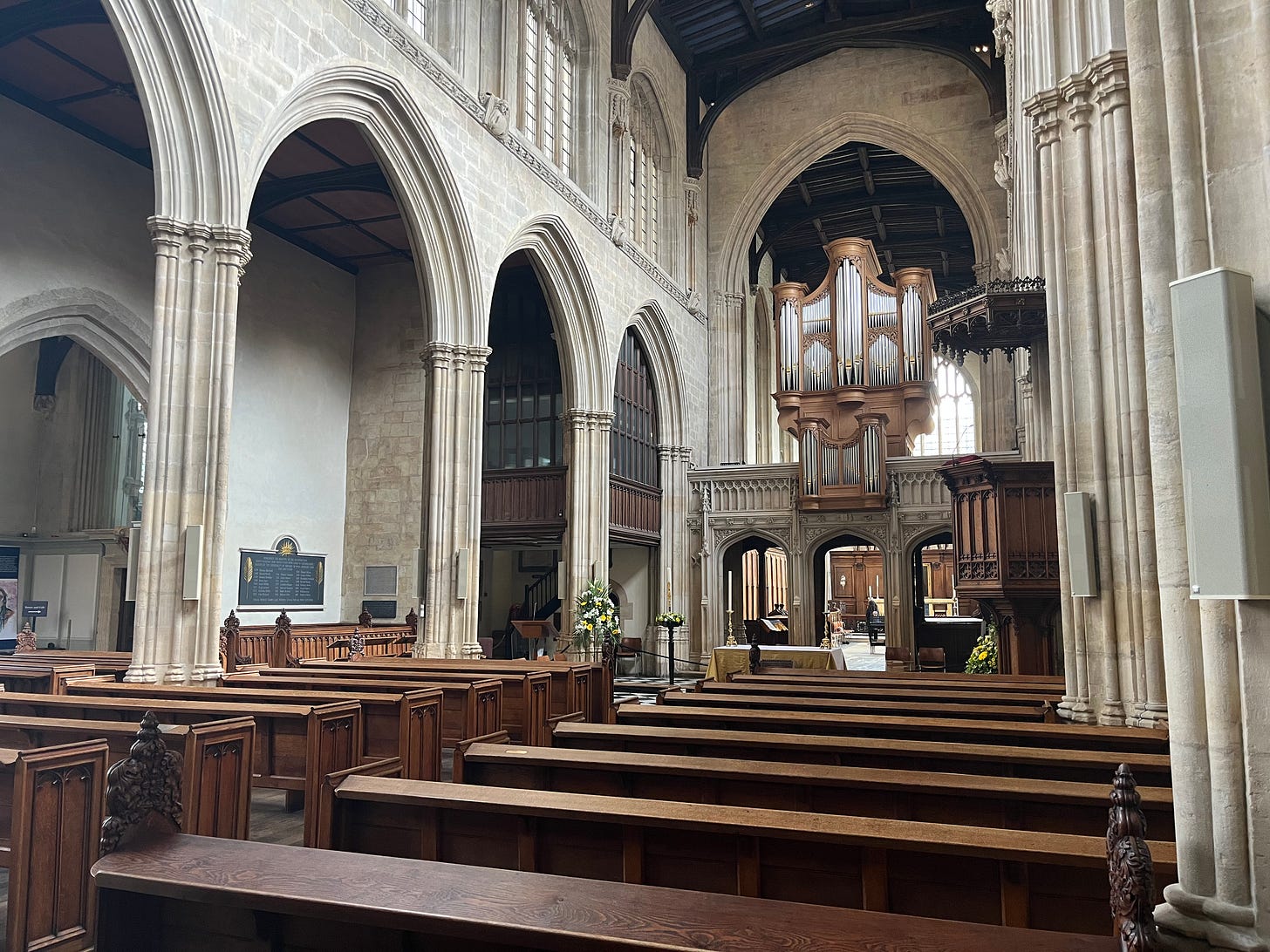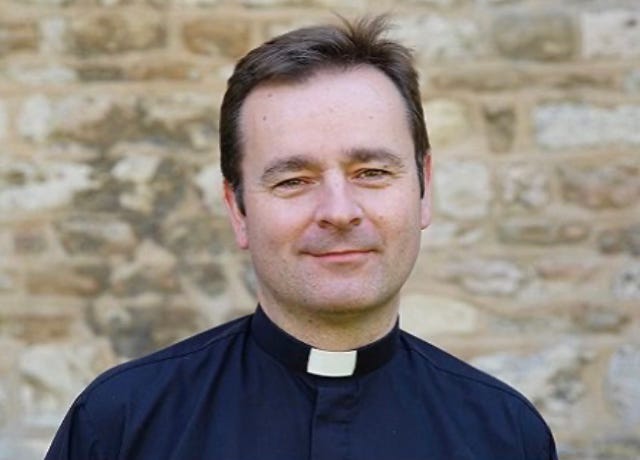Secularisation a factor in declining Church of England wedding figures, says University Vicar
Today, the Church of England faces many challenges. The shrinking number of wedding ceremonies the church carries out is just one. But what’s behind the figures, and where are people marrying instead?
The UK’s increasingly secularised culture, people’s increased mobility, and legislative change is behind the falling number of Church of England (CoE) weddings, according to one Oxfordshire Vicar.
The Revd Canon Dr William Lamb, the Vicar of the University Church of St Mary the Virgin, Oxford, suggests that the lessening number of couples wishing to marry in churches may also be down to “changing lifestyle patterns.”
Nevertheless, there’s been a 48% decrease in opposite-sex wedding ceremonies taking place in the two main Anglican churches in England and Wales between 2012 and 2022 (see Figure 1). Furthermore, there’s also been a 53% fall between 2000 and 2022, according to data analysed by this publication from the Office for National Statistics (ONS).
It is important to note that these particular statistics include Church in Wales (CiW) figures as well as CoE figures – both are part of the Anglican community, and both have extremely close historical ties. Additionally, neither church conducts same-sex marriages.
Figure 1:
In the wider context of marriage data, however, the predicament both churches face aligns with the steady downward trend of marriage in general – or at least for opposite-sex marriage. England and Wales alone have seen a 9% drop in all opposite-sex marriages between 2012 and 2022, and an 11% drop since 2000.
“The reasons for the decrease in religious ceremonies [in particular] is complicated. It’s partly to do with legislation,” explains the Revd Lamb of the University Church over zoom one particularly sunny Friday morning a few weeks ago.
The legislation the Vicar is referring to is the Marriage Act 1994. The legislation was first introduced to parliament by Conservative MP Gyles Brandreth and primarily applies to England and Wales – although Scotland and Northern Ireland have similar legislation. Brandreth’s act outlines that civil marriages can take place at some approved premises like hotels or stately homes.
“When I was first ordained, over 30 years ago, your options for getting married were either the register office or a church. However, the range of licensed premises that are now available for weddings [due to the change in legislation] has meant that there’s a greater degree of flexibility around where couples can get married currently than there was then. Following that date [when the new legislation was introduced], things began to change quite significantly.”
The CoE, in particular, however, has also seen a large fall in average weekly attendances in recent times too. In recent data provided by the CoE, it showed a 34% drop in average weekly attendances in their churches between 2012 and 2023. Whilst the Diocese of Oxford, Lamb’s diocese – made up of Oxfordshire, Berkshire, and Buckinghamshire – saw a 29% fall in its average adult weekly attendance between the same dates (see Figure 2). Additionally, a 54% drop in wedding ceremonies conducted in the diocese was observed from 2012 to 2023 too.
Figure 2:
Could the average attendances data in particular have something to do with the CoE’s current predicament regarding less weddings in areas like Oxford? The Revd Lamb was quick to push back.
“I think the increased secularisation of British culture is a factor, yes. But what I’m trying to indicate is it’s a complex picture. Secularisation is one thing, but another thing which also characterises our culture is increased mobility. People move around a lot more” he says. “I can think of friends of mine who rather than getting married at their local parish church, went abroad to get married – that would have been unthinkable 30 years ago. So, I think as well as secularisation, increased mobility is a factor [in the decline] too.”
The Revd Lamb’s point regarding the UK becoming more secular, or at least, perhaps, less Christian, does add up. From analysed ONS census data, there was a 17% fall in the number of people who said they identified as Christian between 2011 and 2021 in England and Wales. This figure also includes people who identify with other forms of Christianity too like Roman Catholicism, amongst others.
As I begin my next question, the Revd, who’s ‘zooming’ from an unexpectedly untidy office, interrupts me. “Just to go back to your last question,” he says. “Here’s an interesting paradox: most of the people who get married in church are not regular attenders.”
Lamb suggests that the increasing number of qualifying connections which allow people to marry at their local parish church means that the weddings taking place at churches like the University Church in Oxford transcends the traditional local community.
Why, though, are they drawn to the church if they’re not regular attenders – or even great believers? Lamb recites a phrase from the agnostic Phillip Larkin and his poem Church Going as a possible answer to this puzzle: The church is “a serious house on serious earth.”
Nevertheless, both the CoE and CiW wedding statistics, and the CoE’s attendance figures and diocese breakdowns, don’t make for good reading. Even if the number of weddings in these premises has slightly risen again since COVID, there’s still a steady downward trend.
So, where are couples that could be getting married in CoE or CiW churches now choosing to have their wedding ceremonies?
It seems the Revd Lamb’s hypothesis surrounding legislation may be correct. This is because although there’s been a 7% increase in opposite-sex civil marriages generally between 2012 and 2022, and a 15% growth since the turn of the century. Importantly, there’s been a simply staggering 291% jump in civil marriages of opposite-sex couples legally marrying at approved premises between 2000 and 2022 (see Figure 3).
Figure 3:
One such approved premises in Oxfordshire where couples can legally be married is actually the Revd Lamb’s next-door neighbour: the Bodleian Library.
Kate del Nevo, Head of Venue Services at the Bodleian, has overseen events like weddings at the famous 400-year-old library since 2016.
“In terms of weddings, we’ll do 50 to 60 a year. We’re licensed for full civil ceremonies through the Oxford Register Office, and ceremonies can take place in the Divinity School or Convocation House,” she tells me.
Kate explains that the venue offers an array of weddings such as non-legal weddings – for example, blessings after the couple has been legally married elsewhere – as well as full on legal civil ceremonies. She says most blessings are just for foreign couples who’re alumni of the university and met in Oxford.
Nevertheless, Kate informs me that there’s been an increase in couples wanting the full package at the venue recently: legal ceremony and reception.
“We’ve definitely seen a shift back to couples wanting legal ceremonies in recent years. I think it’s sometimes just easier for couples to do it all in one place,” she says.
In terms of why approved venues like the Bodleian may be incurring on demographics which in the past might have been married in CoE weddings, Kate agrees that it’s complex.
She lists a range of possible reasons: the rise in inter-faith marriages, changing traditions, and the fact approved venues like the Bodleian offer more personalisation.

“Being unique and putting your spin on things is something that’s really growing. I think there could be a perception that with a traditional church service, you won’t get the chance to personalise it,” she says.
For many, their wedding is one of the most special days of their lives, and as a result they want it to be perfect – approved venues’ pliability certainly helps in this regard. Whereas the CoE’s inflexibility and traditional customs may be hindering them. However, Revd Lamb still feels positive about the church’s future, even considering the statistics. “The fundamental insight that the Christian Gospel gives me is the idea that God is faithful. And if God is faithful, the church will always have a future that it can be confident about.”




